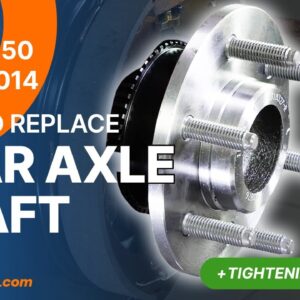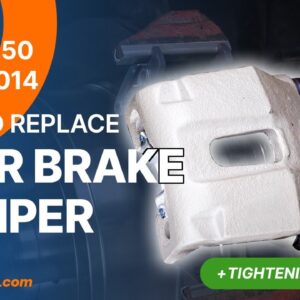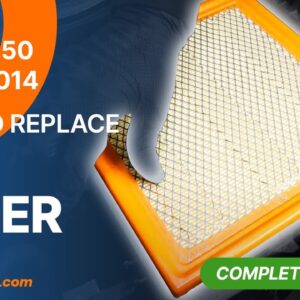Watch this video to learn how to replace rear shocks on a 2009-2014 Ford F-150.
Replacing Rear Shocks on a 2009-2014 Ford F-150: What You Need
Ready to perform this DIY replacement job? Remember that all the parts in this guide can be found on CarParts.com. Check out all the products that fit your vehicle right here.
Parts Checklist
- Shocks
- Penetrating oil
Tightening Torques
- Shock absorber upper holding screw: 66 Ft-lbs
- Shock absorber lower holding screw: 66 Ft-lbs
Tools Checklist
Here’s the toolbox we recommend to repair your Ford F-150: HM85 85 Piece Ratchet and Socket Set
List of tools:
- Hydraulic jack
- Jack stands
- Wheel lug wrench
- Wire brush
- Ratchet
- 15mm socket
- 18mm spanner
- Torque wrench
Step-by-Step Instructions
Step 1: Turn off your vehicle’s ignition and engage the parking brake.
Step 2: Loosen the stud bolts on the rear wheels.
Step 3: Lift the rear of your vehicle following safe jacking procedures. Watch our “How to jack your Ford F-150 safely” video for guidance before proceeding. Place the vehicle on jack stands.
Step 5: For rear shock replacement, remove the wheels to gain full access. Place the wheels under the vehicle for safety.
Step 6: Brush the shock’s upper holding screw and apply penetrating oil.
Step 7: Using a ratchet and a 15mm socket, unscrew the upper holding screw of the shock while holding the nut with an 18mm spanner. Remove the screw.
Step 8: Repeat the process for the lower holding screw and remove it. Extract the old shock.
Step 9: Prepare the new shock by priming it. Press the shock vertically to separate the gas and hydraulic fluid.
Step 10: Position the new shock and insert the upper holding screw.
Step 11: Place the shock into its lower slot and secure it by inserting the lower holding screw. Tighten it until it makes contact.
Step 12: To avoid damaging the silent blocks, tighten the holding screws with the rear axle in the “vehicle on the ground” position. Jack stands should currently be on the rear axle, ensuring the shock is properly positioned.
Step 13: Use a torque wrench to finish tightening the screws to the recommended torque.
Step 14: Repeat the entire process on the other side.
Step 15: Once both sides are complete, put the wheels back on the vehicle.
Step 16: Lower the car to the ground and securely block the wheels.
Compatible Vehicles
The operation and tools displayed in the video should be available on the following vehicles :
Important Reminders
Before installing the new shock absorbers, it is necessary to prime them by pressing the shock vertically, so that the gas and hydraulic fluid are separated.
The components to be removed are very often seized up, so don’t hesitate to brush and to use penetrating oil to make removal easier.
In order not to damage the silent blocks, it is necessary to tighten the holding screws with the rear axle in the “vehicle on the ground” position.
Disclaimer:
This video is for entertainment purposes only. CarParts.com, Inc. disclaims all damages including, but not limited to, actual, consequential, and/or punitive, for any liability, claim, or any other injury or cause related to or arising from any information or lack thereof posted in this video. No information contained in this video shall create any expressed or implied warranty or guarantee of any particular result. All mechanical car projects entail some risk. It is the sole responsibility of the viewer to assume this risk. If you are in doubt, please consult a licensed mechanic in your area.
Any information provided on this Website is for informational purposes only and is not intended to replace consultation with a professional mechanic. The accuracy and timeliness of the information may change from the time of publication.
















